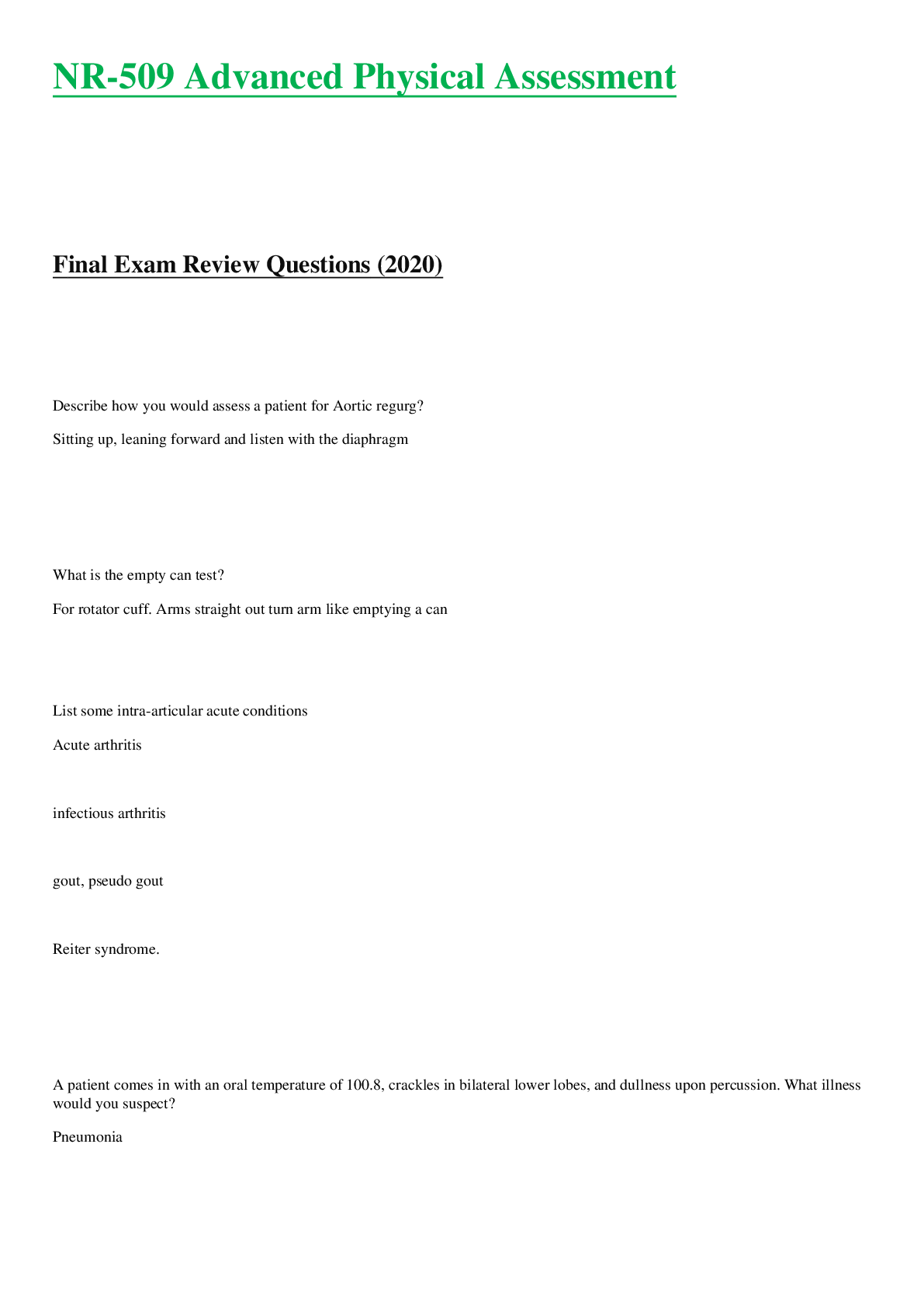CHEM 120 Final Exam Review
Document Content and Description Below
CHEM 120 Final Exam Review 1. Know what is the atomic number, atomic mass, protons, neutrons and electrons Atomic number – is the number of protons in the nucleus of an atom of any element At... omic mass – is expressed in amu; is the wighted average Protons – are positively charged particles in the nucleus Neutron – are neutral, have no electrical charge Electrons – are negatively charged particles in the nucleus Atomic number = number of protons Atomic number – (minus) atomic mass = neutrons 2. Describe the shapes of molecules H2S, CBr4, and PCl3 H2S – bent • Number of bonded atoms: 2 • Number of lone pairs: 2 • Number of electron sets: 4 CBr4 – tetrahedral • Number of bonded atoms: 4 • Number of lone pairs: 0 • Number of electron sets: 4 PCl3 – pyramidal • Number of bonded atoms: 3 • Number of lone pairs: 1 • Number of electron sets: 4 3. Calculating types of bonding (ionic, covalent, nonpolar covalent) Subtract the smaller EN value from the larger EN value • 0 – 0.4 = nonpolar covalent • > (greater than) 0.4 – 1.7 = polar covalent • > (greater than) 1.7 = ionic bond Ionic bonds – is a bond that forms when electrons is being transferred from one form to another form, which results in positive and negative ions Covalent bond – a bond formed when atoms share electrons Nonpolar covalent bonds – when the EN is very similar between 2 atoms Polar covalent – when the EN is different between 2 atoms 4. Non – polar covalent bonds and polar covalent bonds and electron sharing Bonding electron pair – the shared pair of electrons in covalent bonds Nonbonding pairs or lone pairs – the electrons that are not shared as part of the covalent bond Nonpolar covalent bonds – when the EN is very similar between 2 atoms Polar covalent – when the EN is different between 2 atoms 5. Know the structure and makeup of DNA and RNA, know what DNA replication, transcription and translation are and ribosomes role in protein synthesis. Deoxyribonucleic acid (DNA) – provides a mechanism for heredity and serves as the blueprint for all the proteins of an organism • The DNA helix is held together by hydrogen bonds between the nucleotides • Adenine (A) binds with Thymine (T) in DNA • Guanine (G) binds with Cytosine (C) in DNA and RNA • DNA complimentary base pairs: A – T; C – G • DNA is made up of genes that code for specific proteins Ribonucleic acid (RNA) – carries information needed to the protein synthesis • Adenine (A) binds with Uracil (U) in RNA • Guanine (G) binds with Cytosine (C) in DNA and RNA • RNA complimentary base pairs: A – U; C – G DNA and RNA are polymers of repeating units of nucleotides DNA Replication – is copying or duplication of DNA molecules Transcription – the transfer of the DNA gene information to RNA which is transported out of the nucleus • A segment of DNA called the template strand transfers its information to a special RNA molecule called messenger RNA • The base sequence of DNA specifies the base sequence of mRNA • In eukaryotes the mRNA is transported out of the nucleus to the ribosome Translation – the translation of the mRNA sequence into a specific protein • Decoding of the mRNA results in protein synthesis which occurs in the ribosome in the cytoplasm of the cell 6. Know what a protein is, its makeup and what is primary, tertiary (globular), and quaternary structure. Also the types of bonds that holds the structure together. Proteins – serve as the structural materials and enzymes of animals • Muscle tissue, skin and hair are mostly proteins • Silk, wool, nails, claws, feathers, horns, and hooves are proteins • Proteins are polymers with the monomer units are about 20 different amino acids • The amino acids differ in their side chains The structure of proteins have four organizational levels: Primary Structure – is simply the order of its amino acids; held together by the chain of amino acids Secondary structure – polypeptide chains can fold into regular structures within the protein chain such as alpha chains and beta sheets; held together by alpha helix or alpha chain which can be many .........continued....... [Show More]
Last updated: 1 year ago
Preview 1 out of 7 pages
Instant download
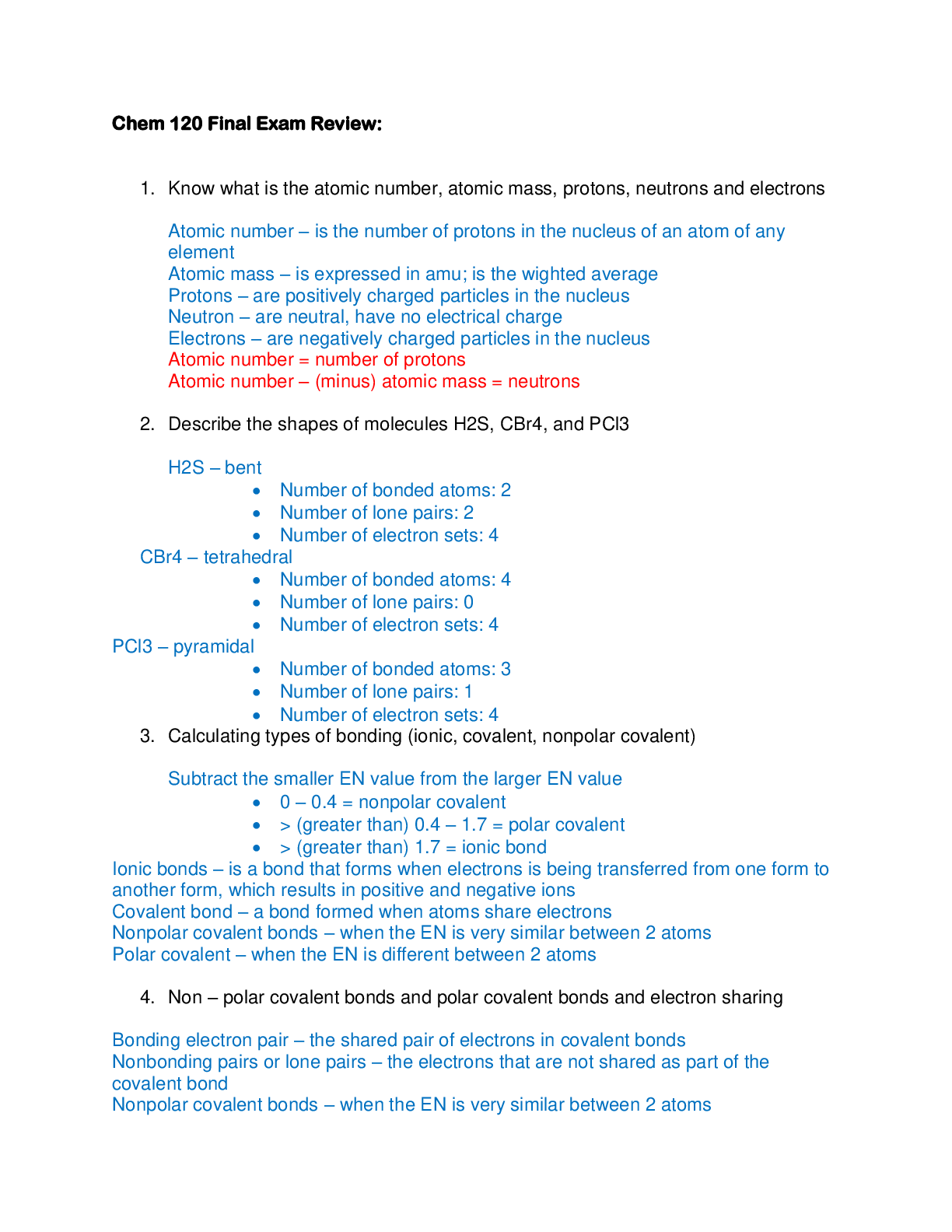
Buy this document to get the full access instantly
Instant Download Access after purchase
Add to cartInstant download
Reviews( 0 )
Document information
Connected school, study & course
About the document
Uploaded On
Feb 22, 2021
Number of pages
7
Written in
Additional information
This document has been written for:
Uploaded
Feb 22, 2021
Downloads
0
Views
37

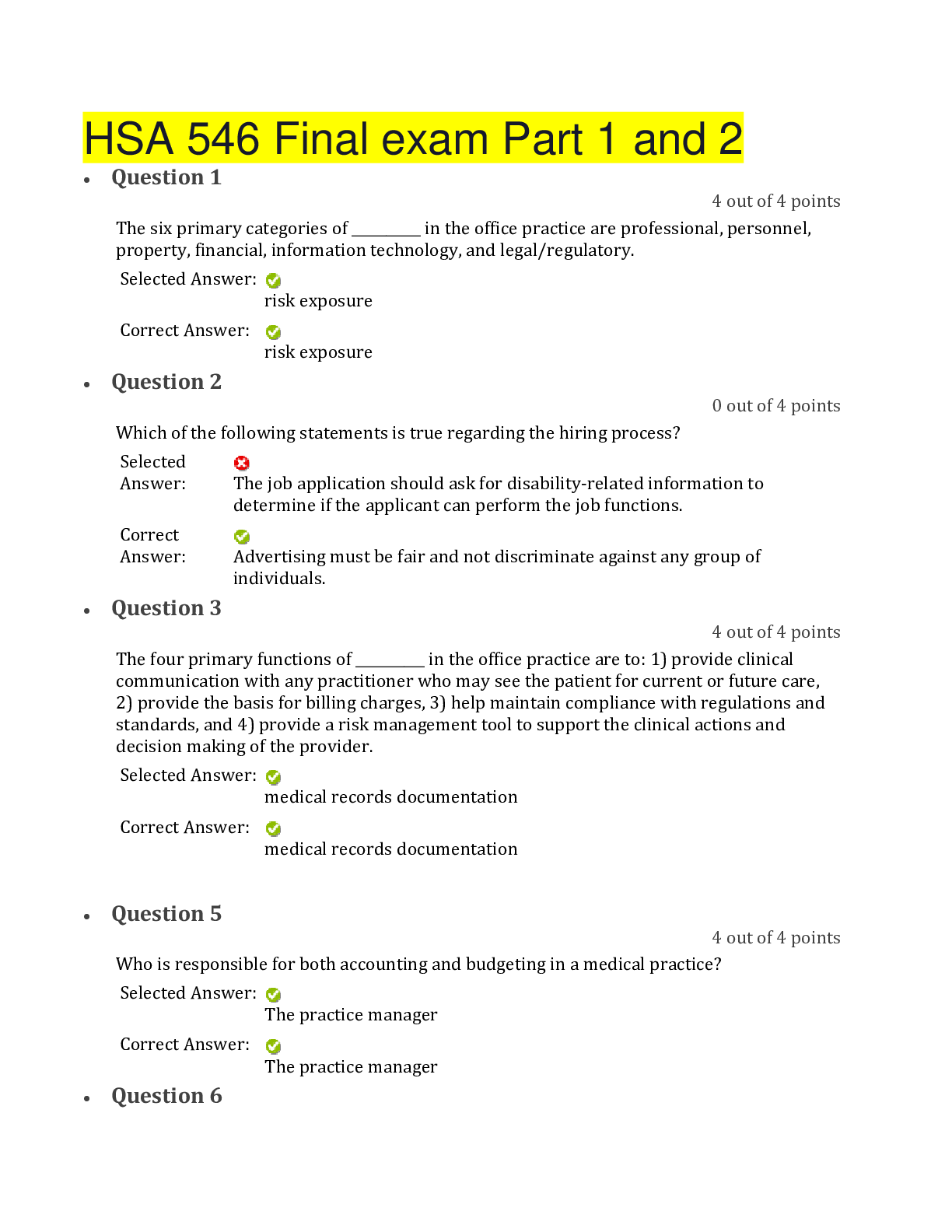


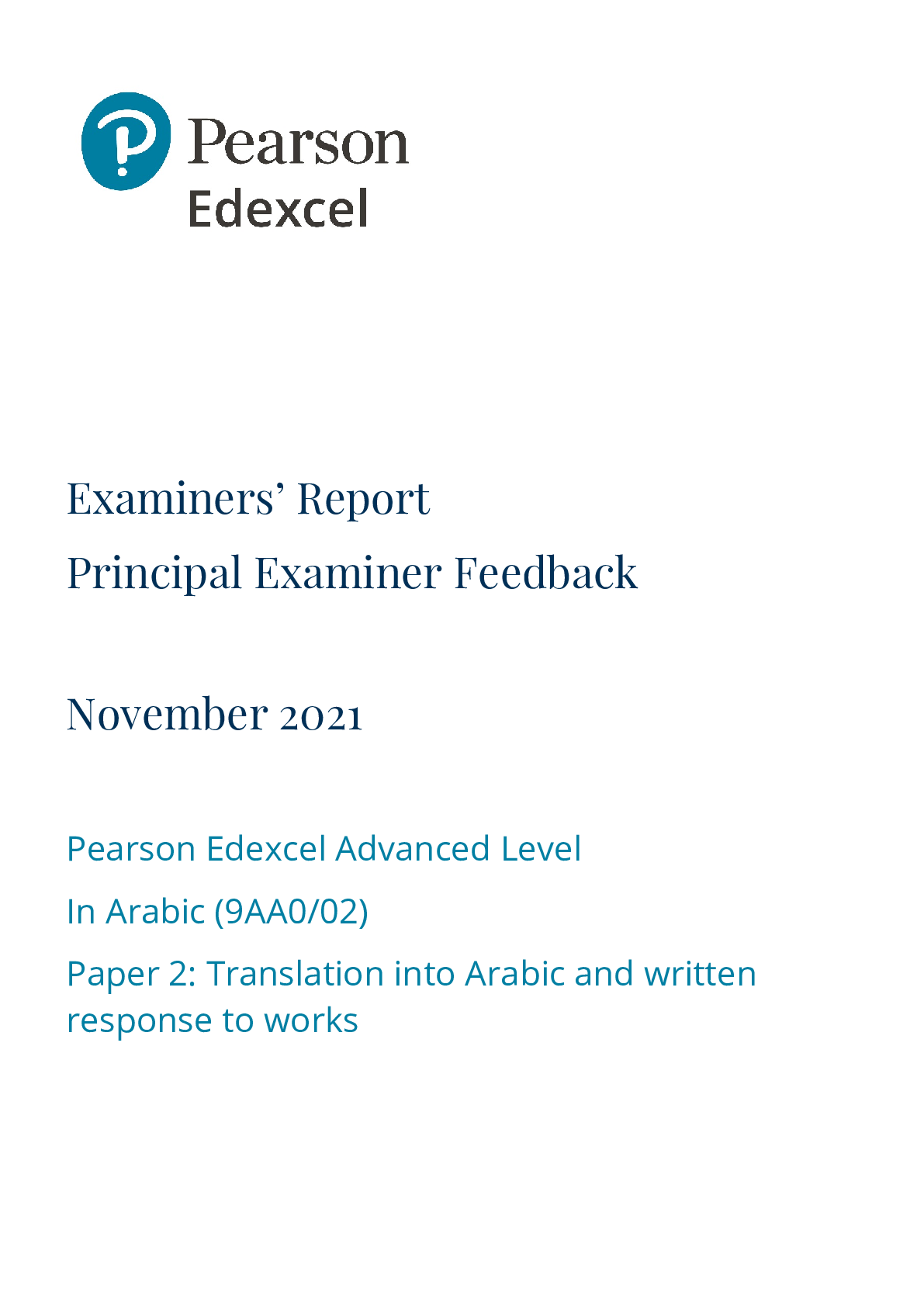
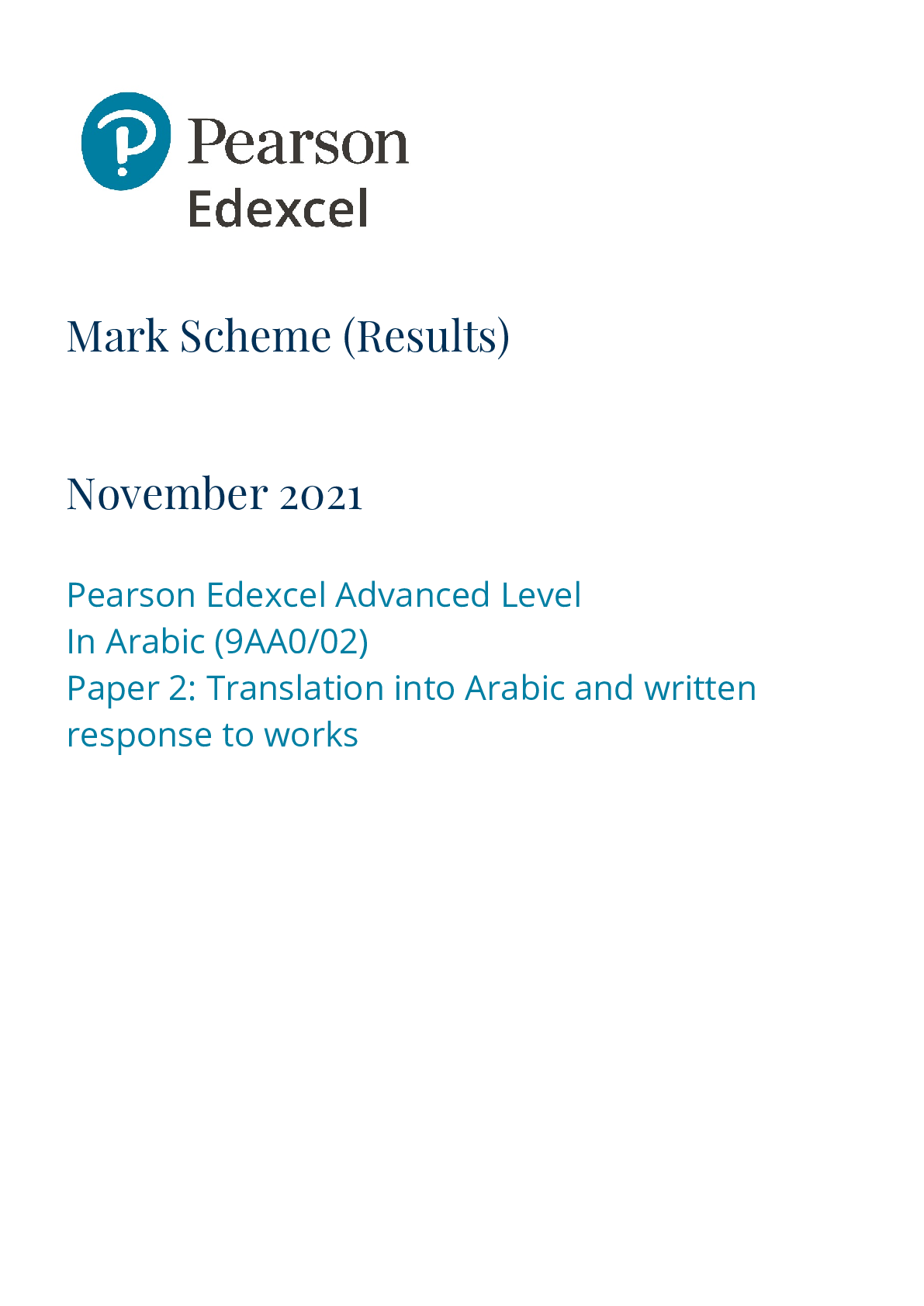
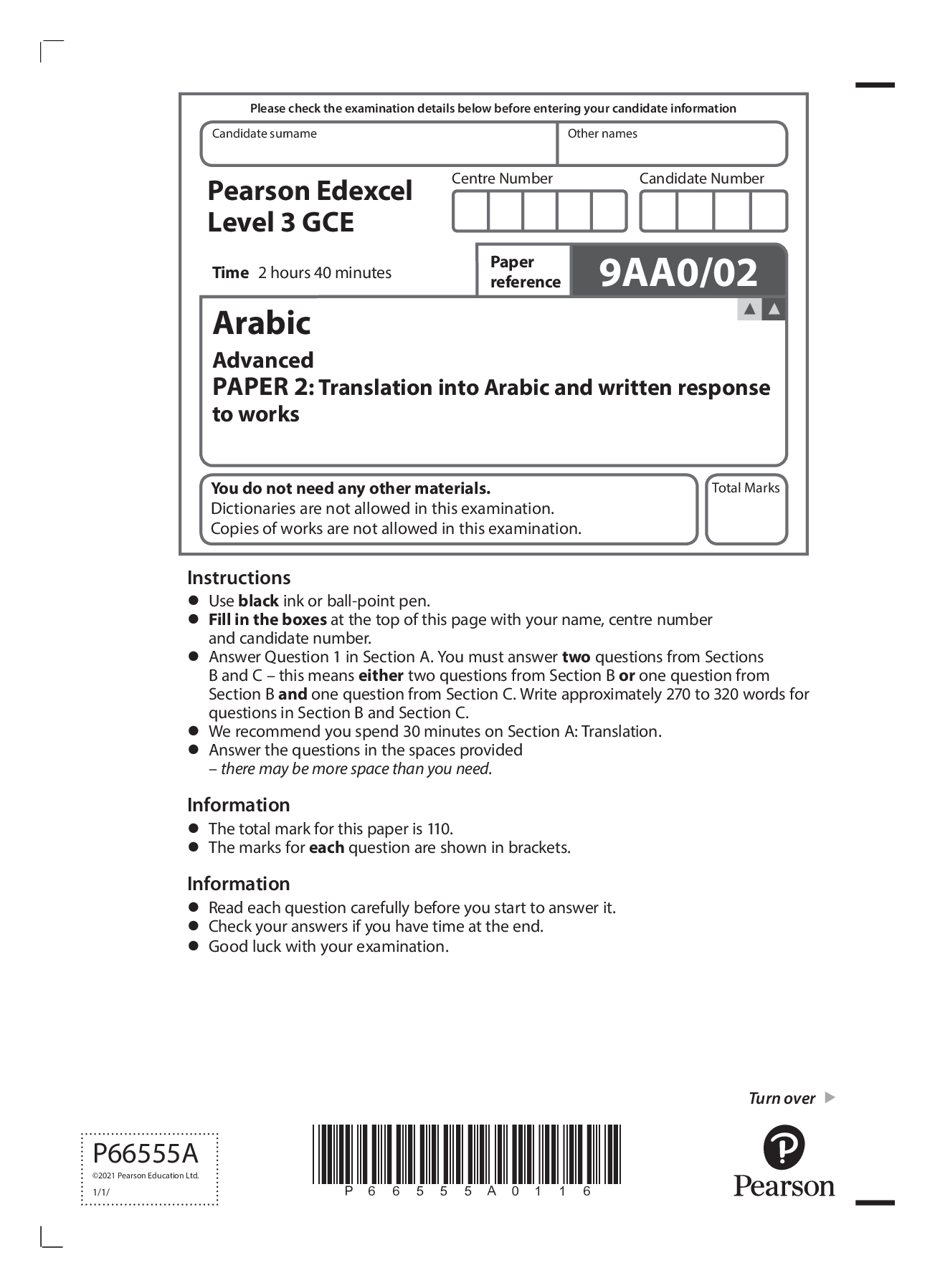
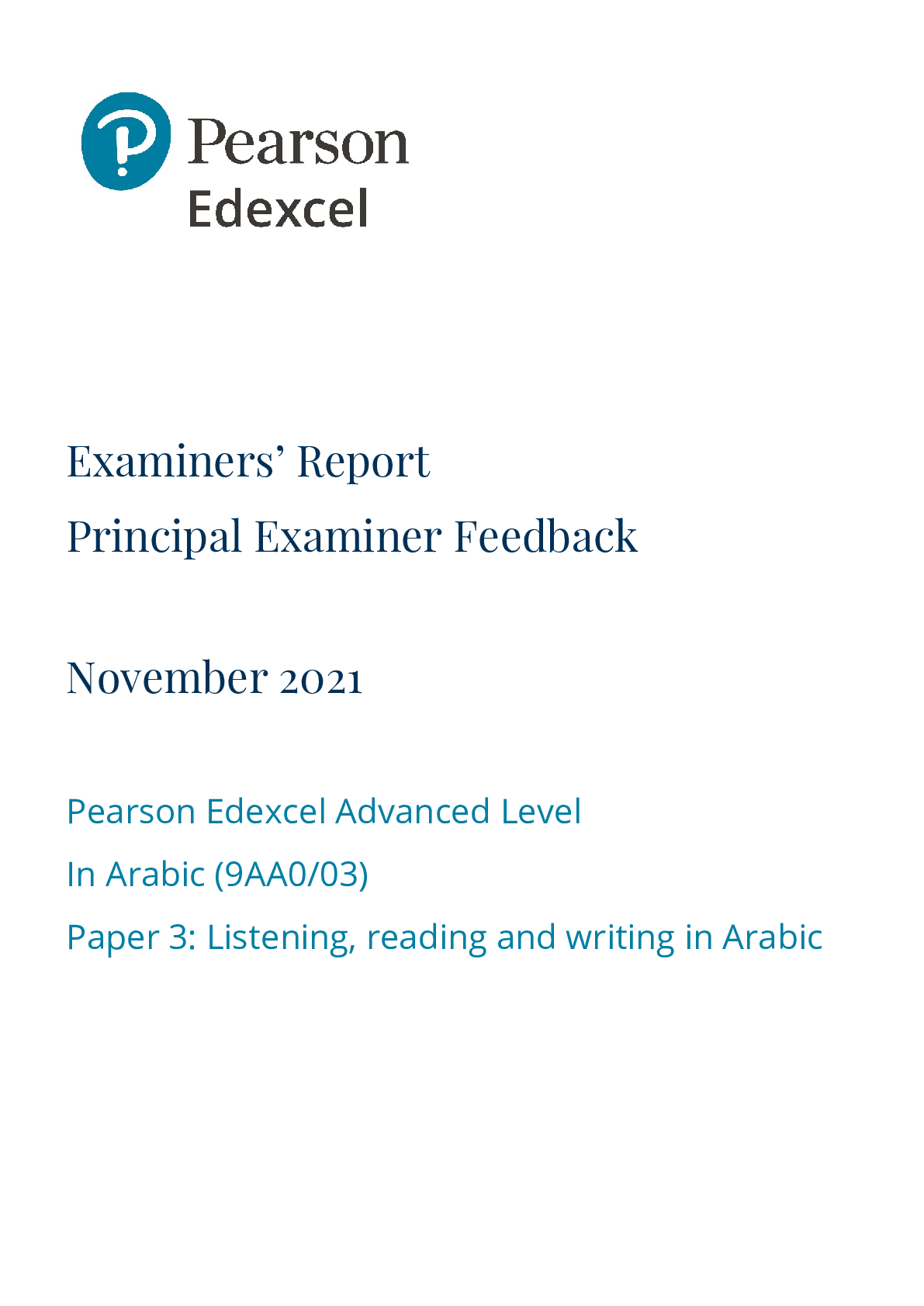
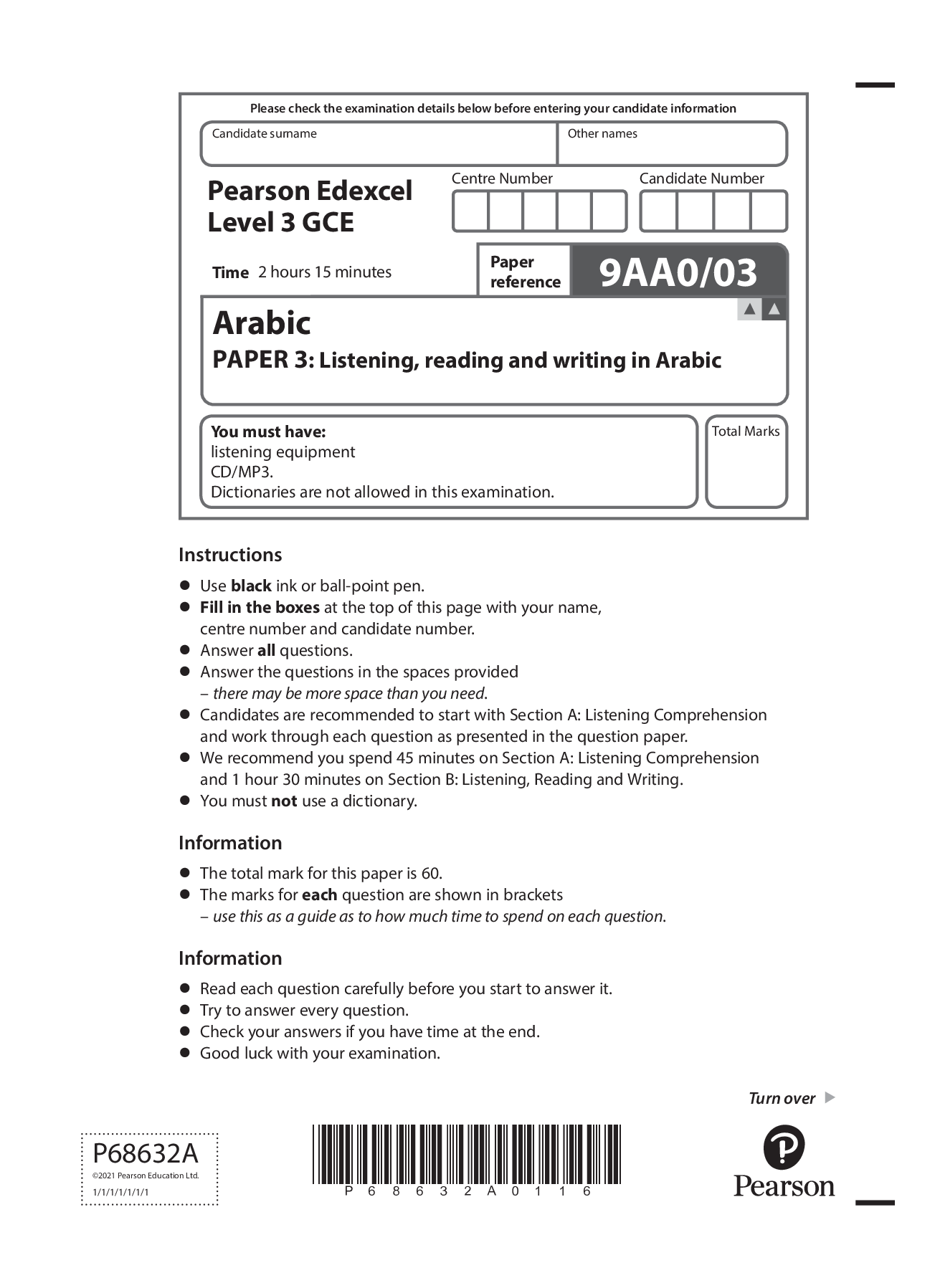
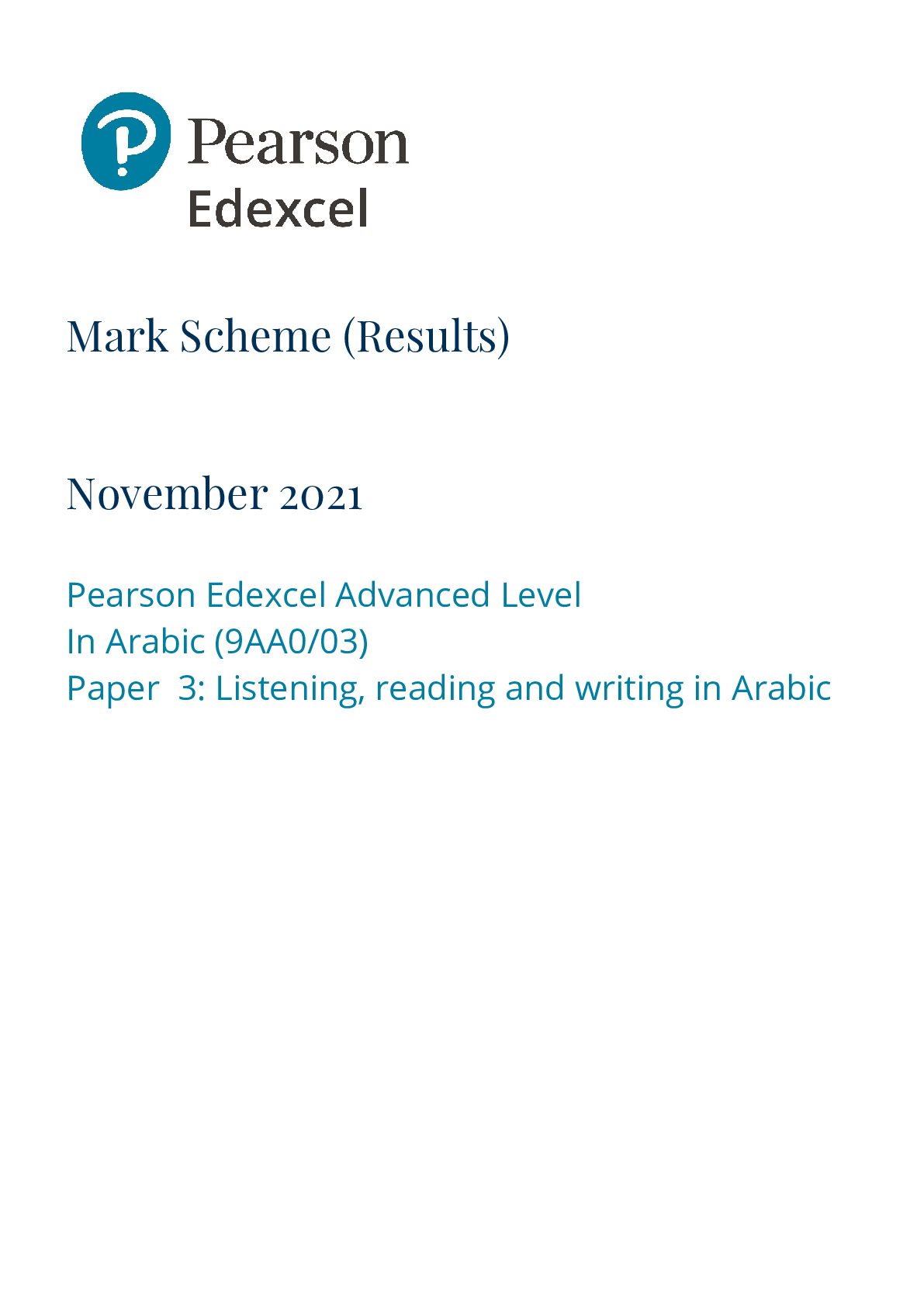

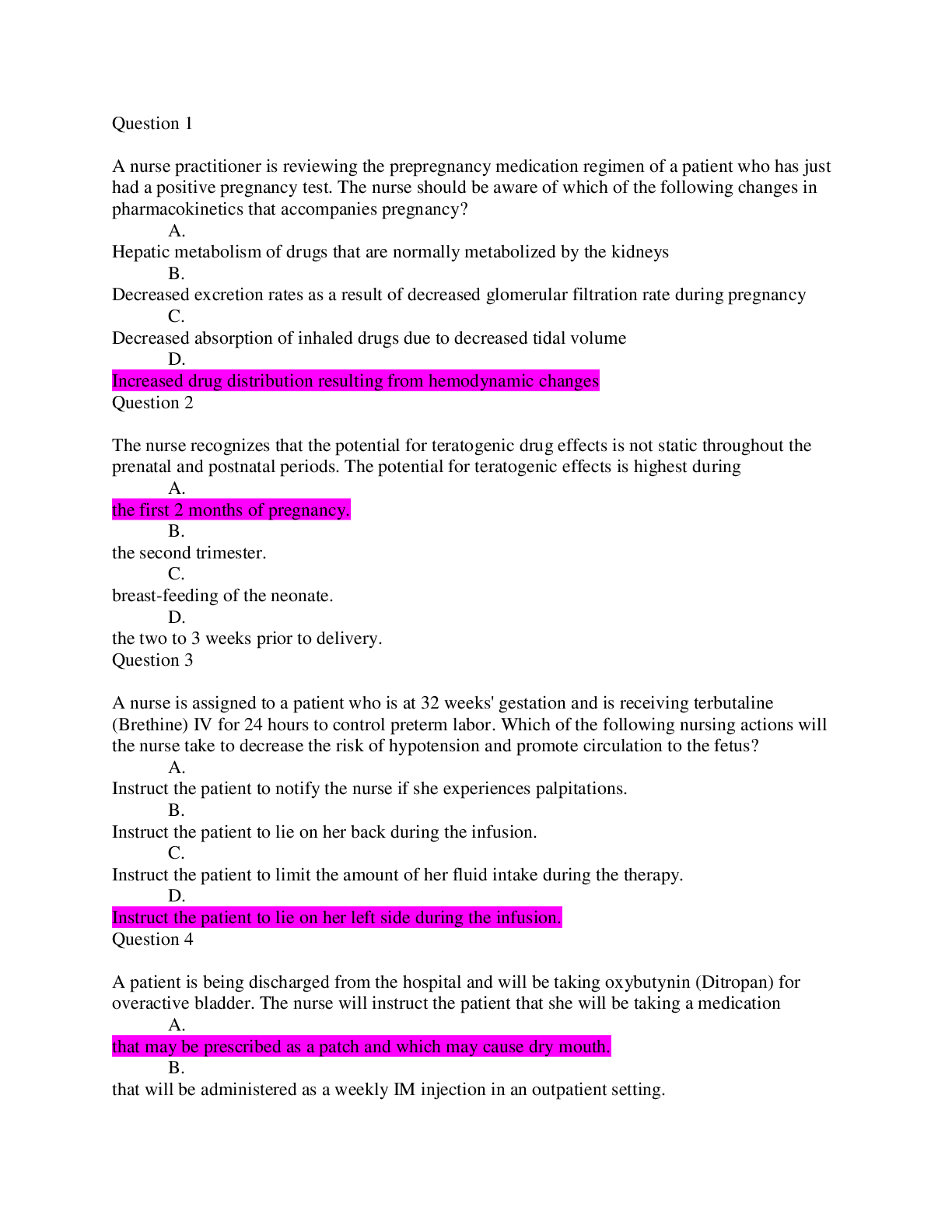
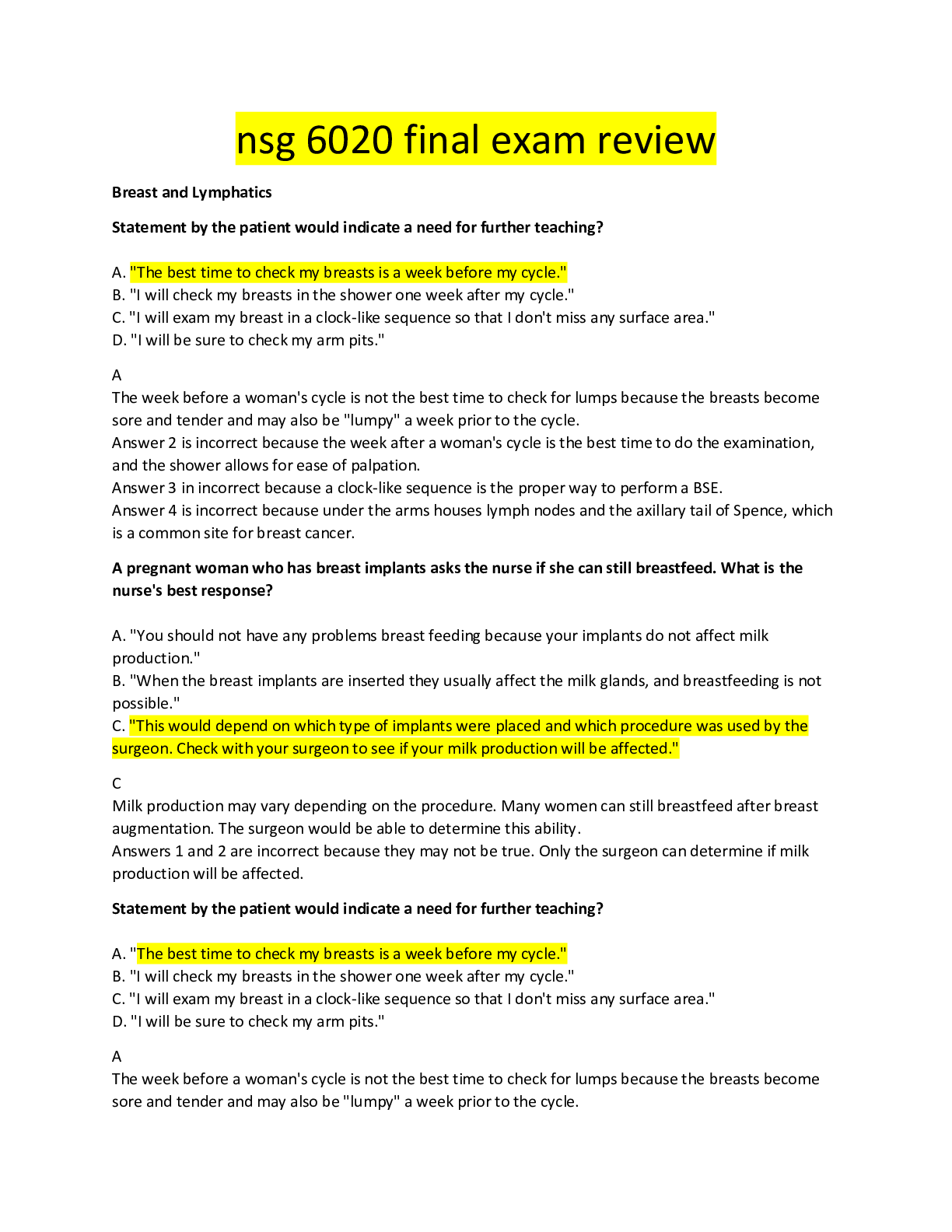
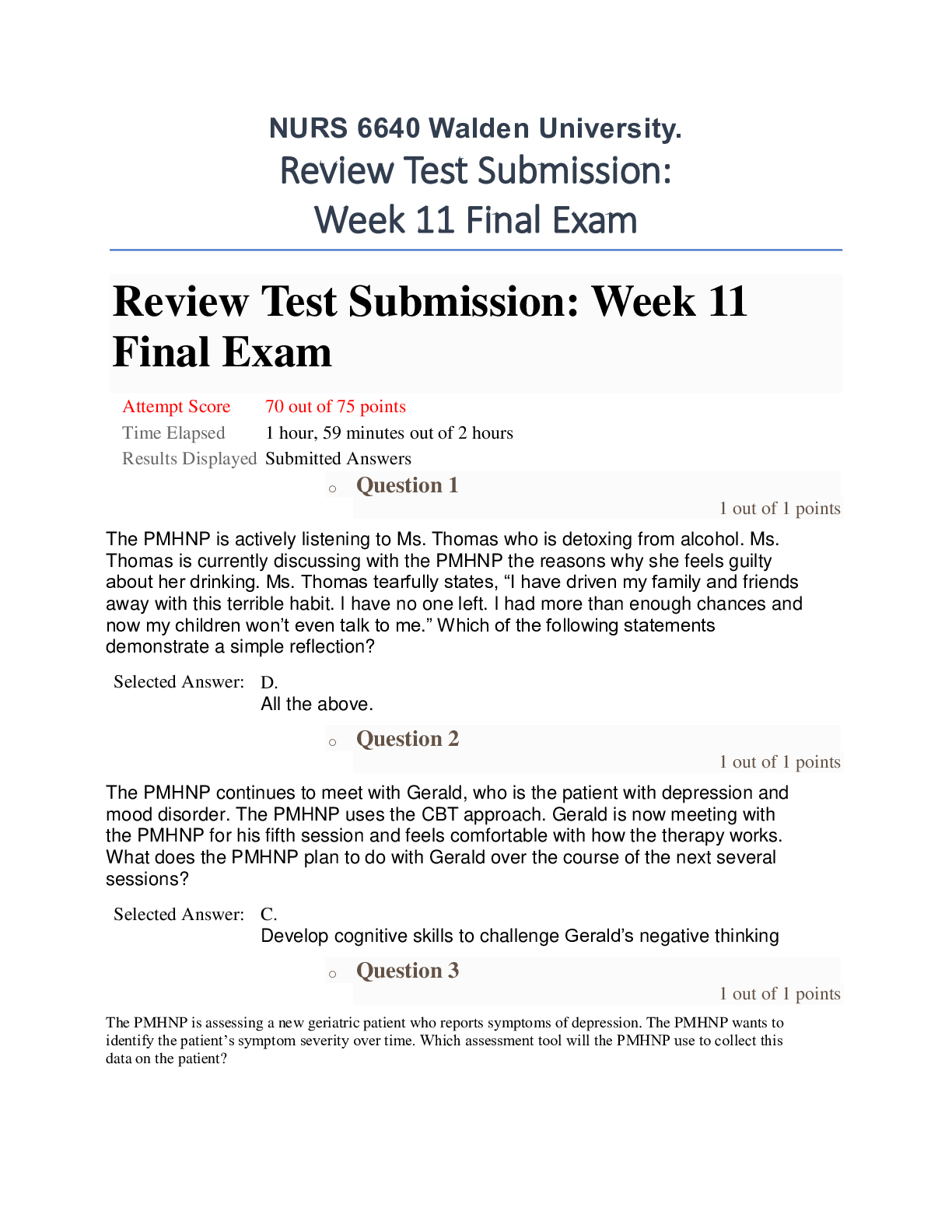
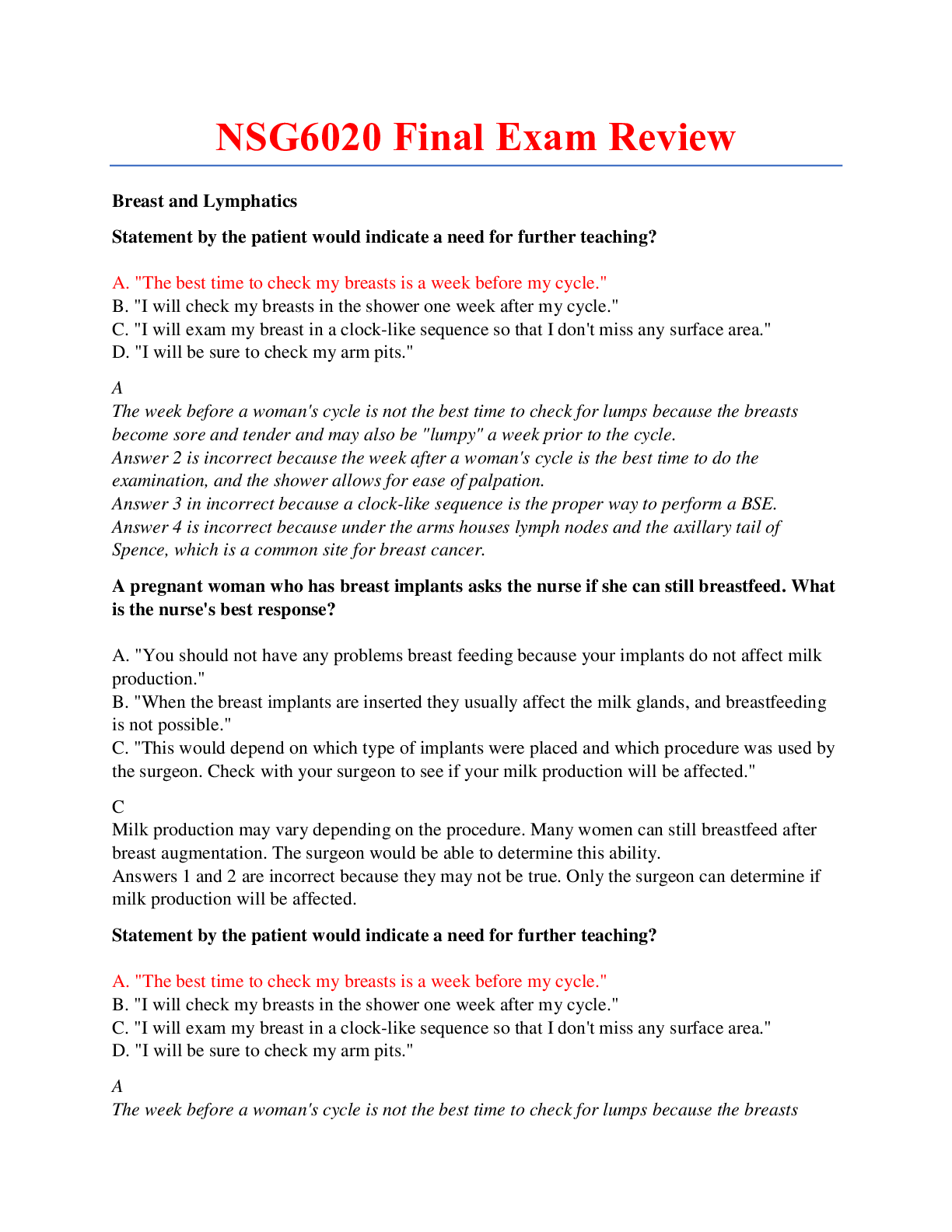

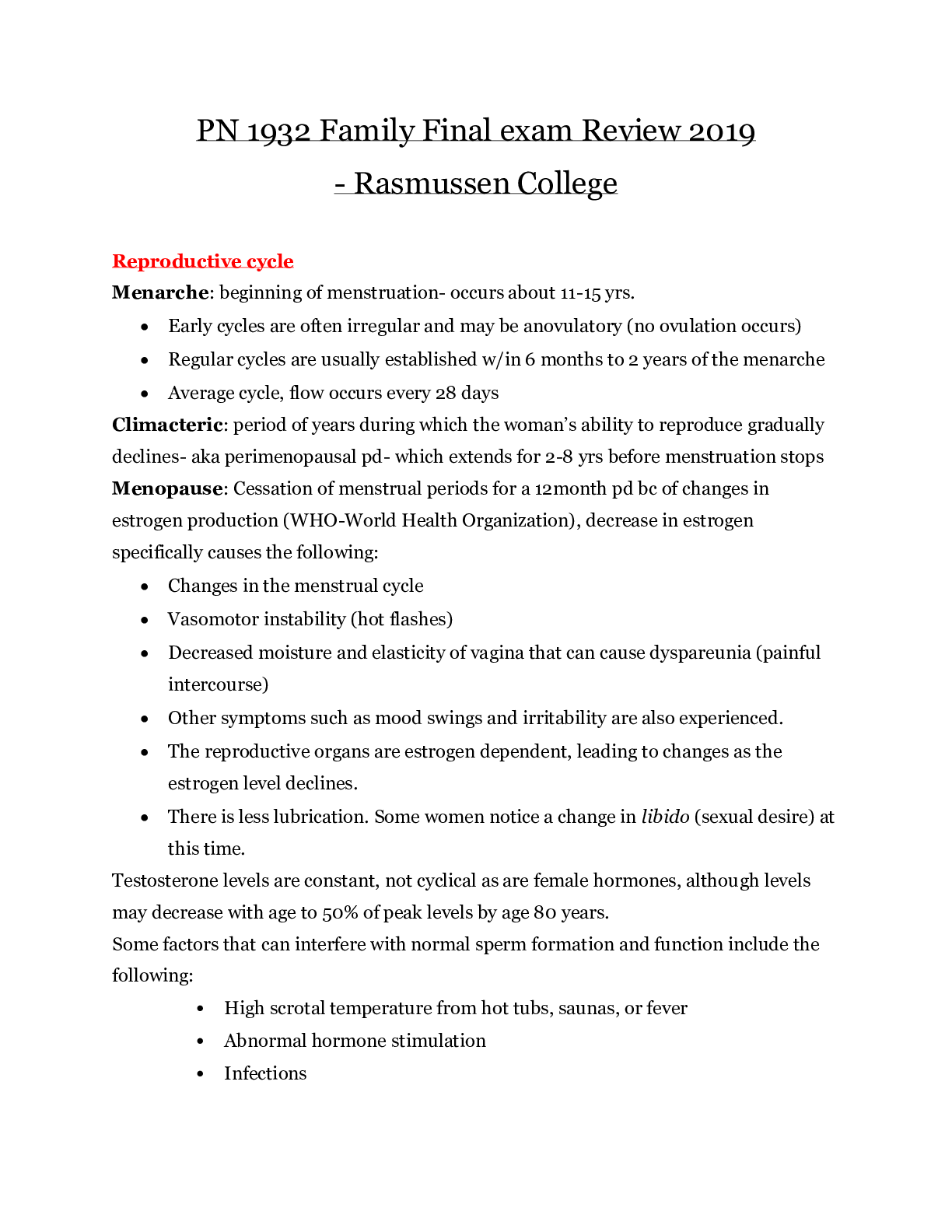
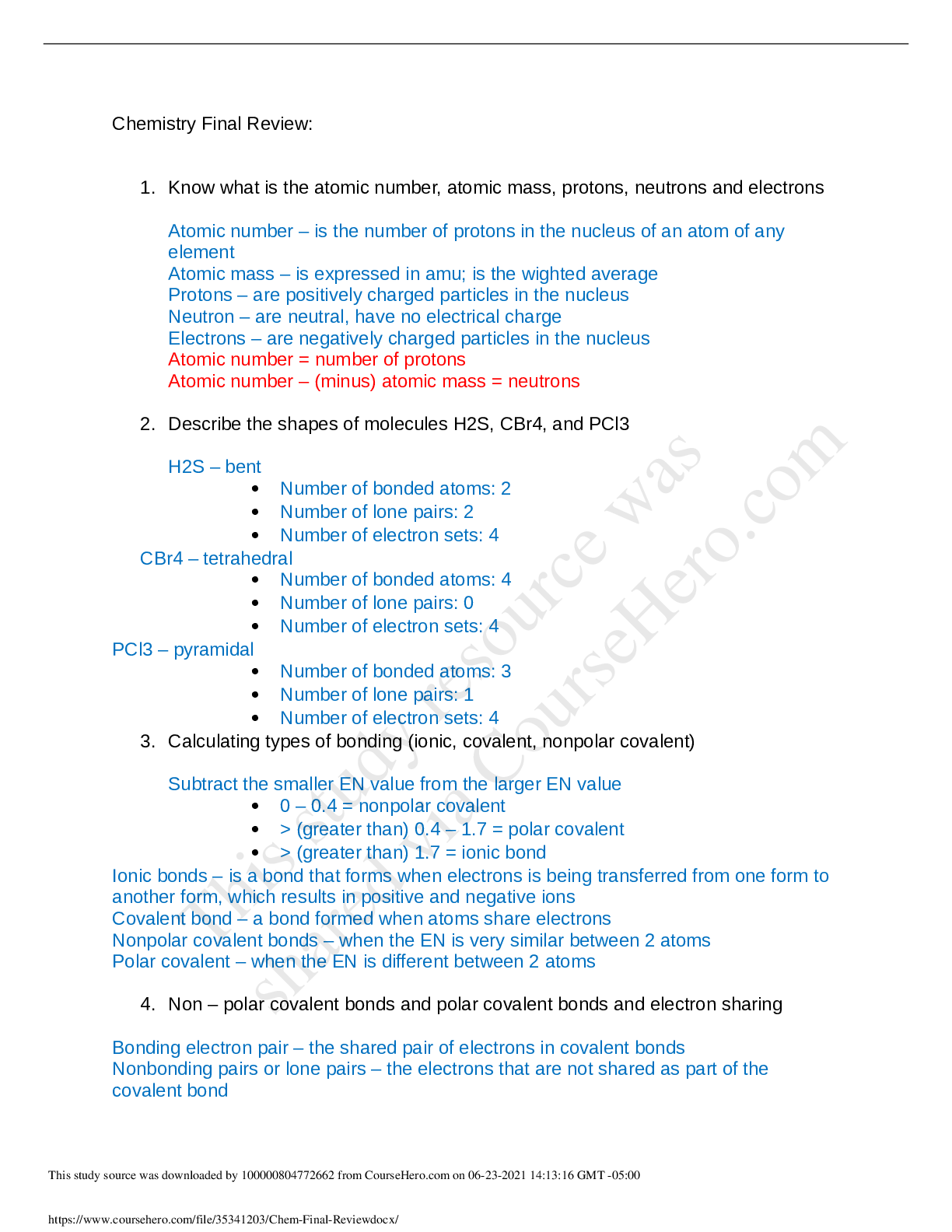
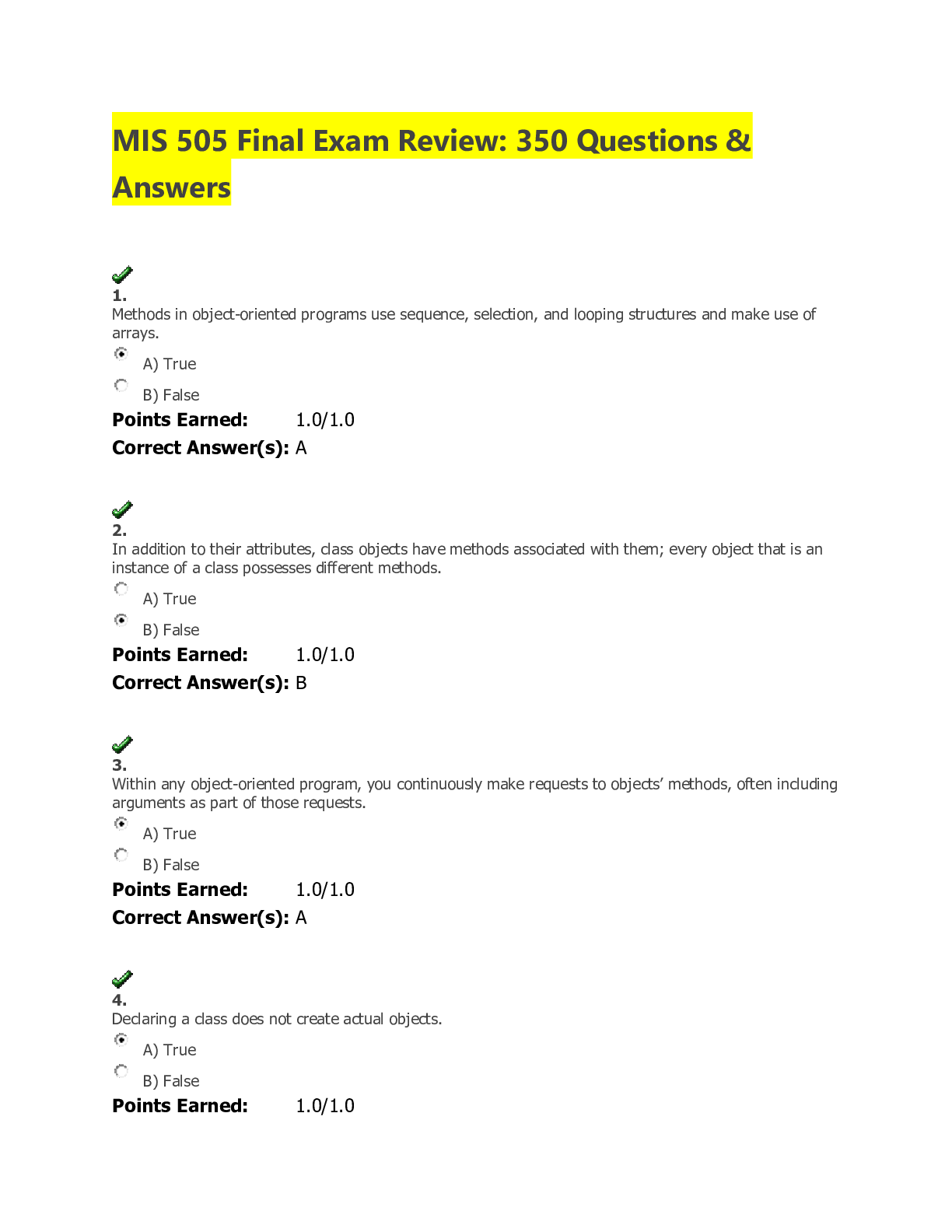
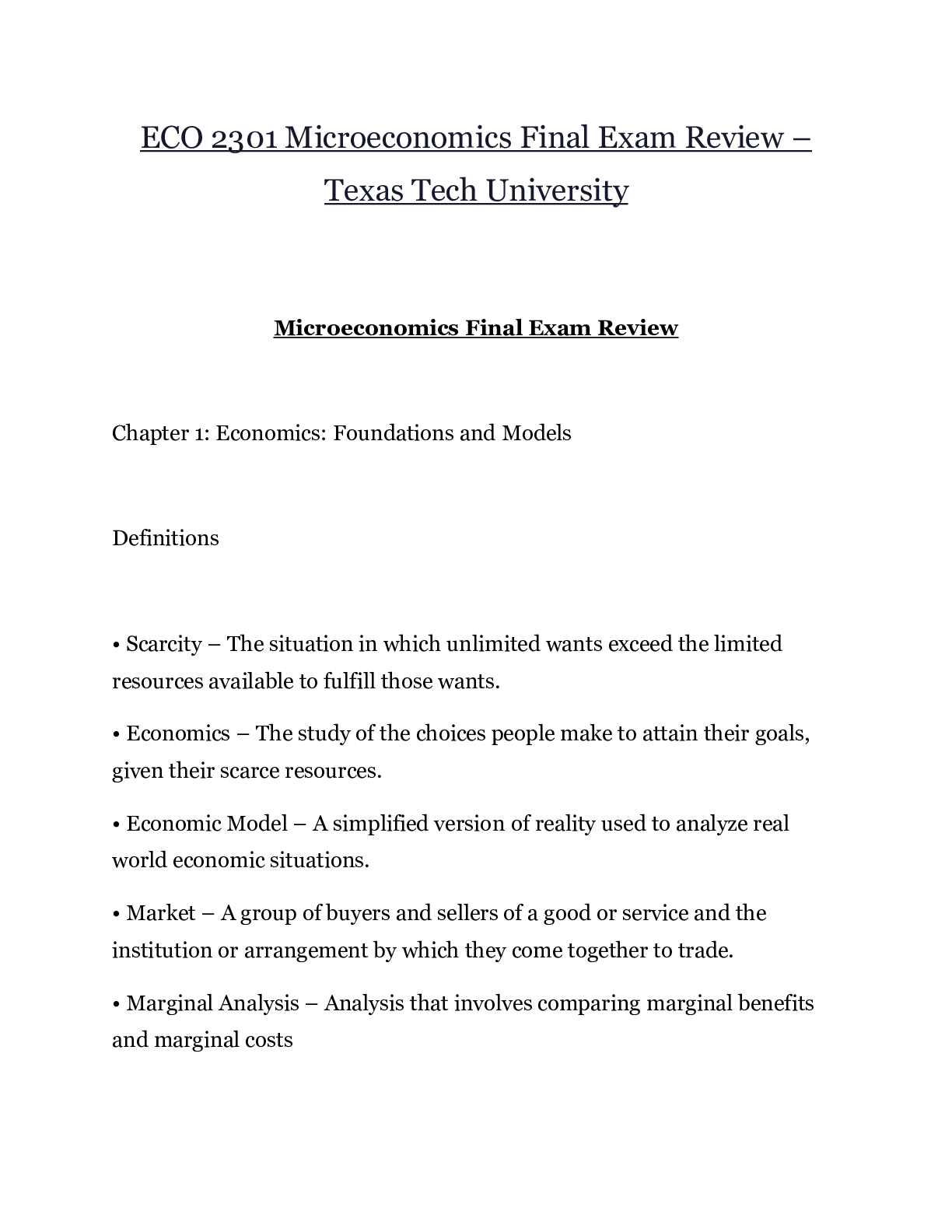
.png)

